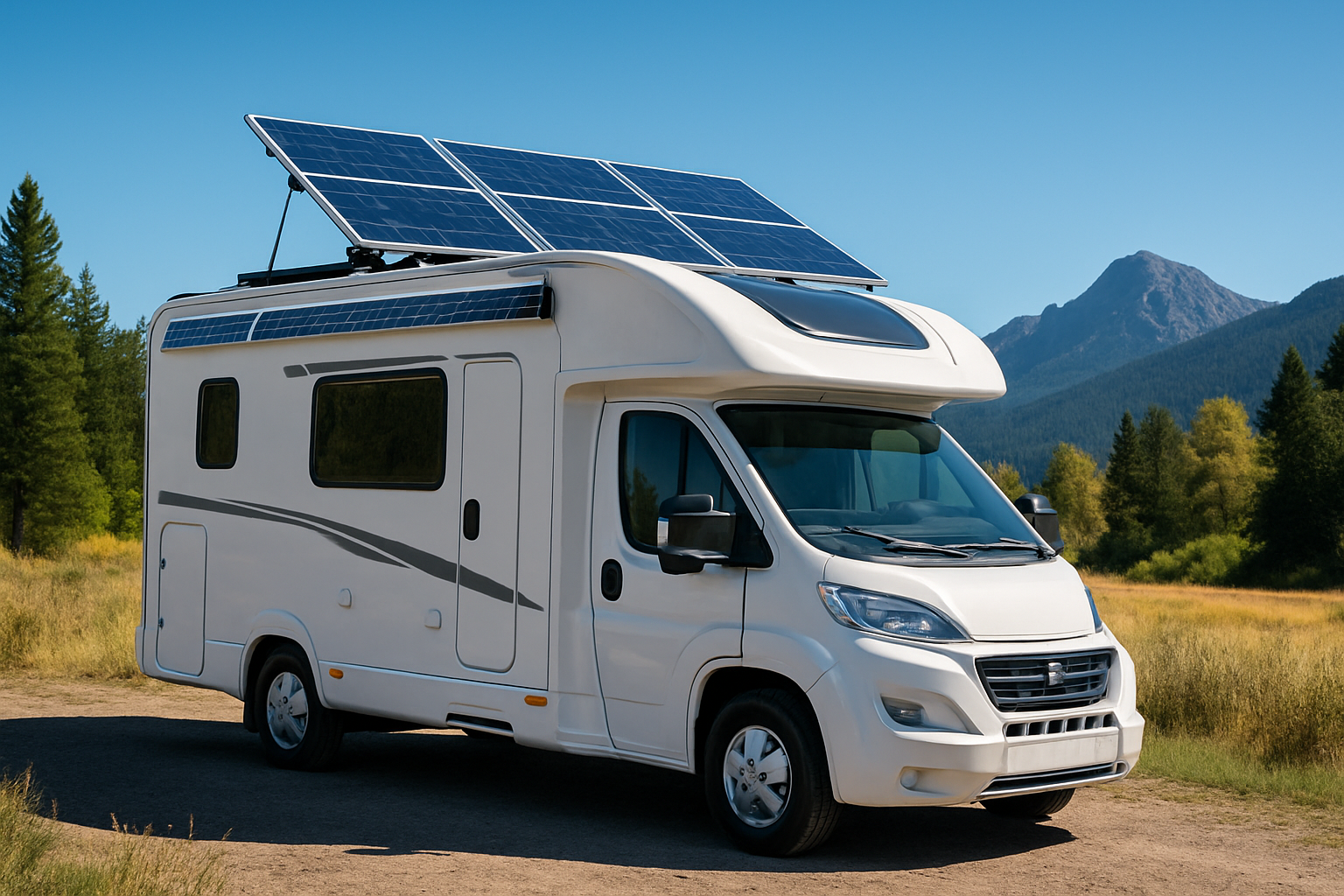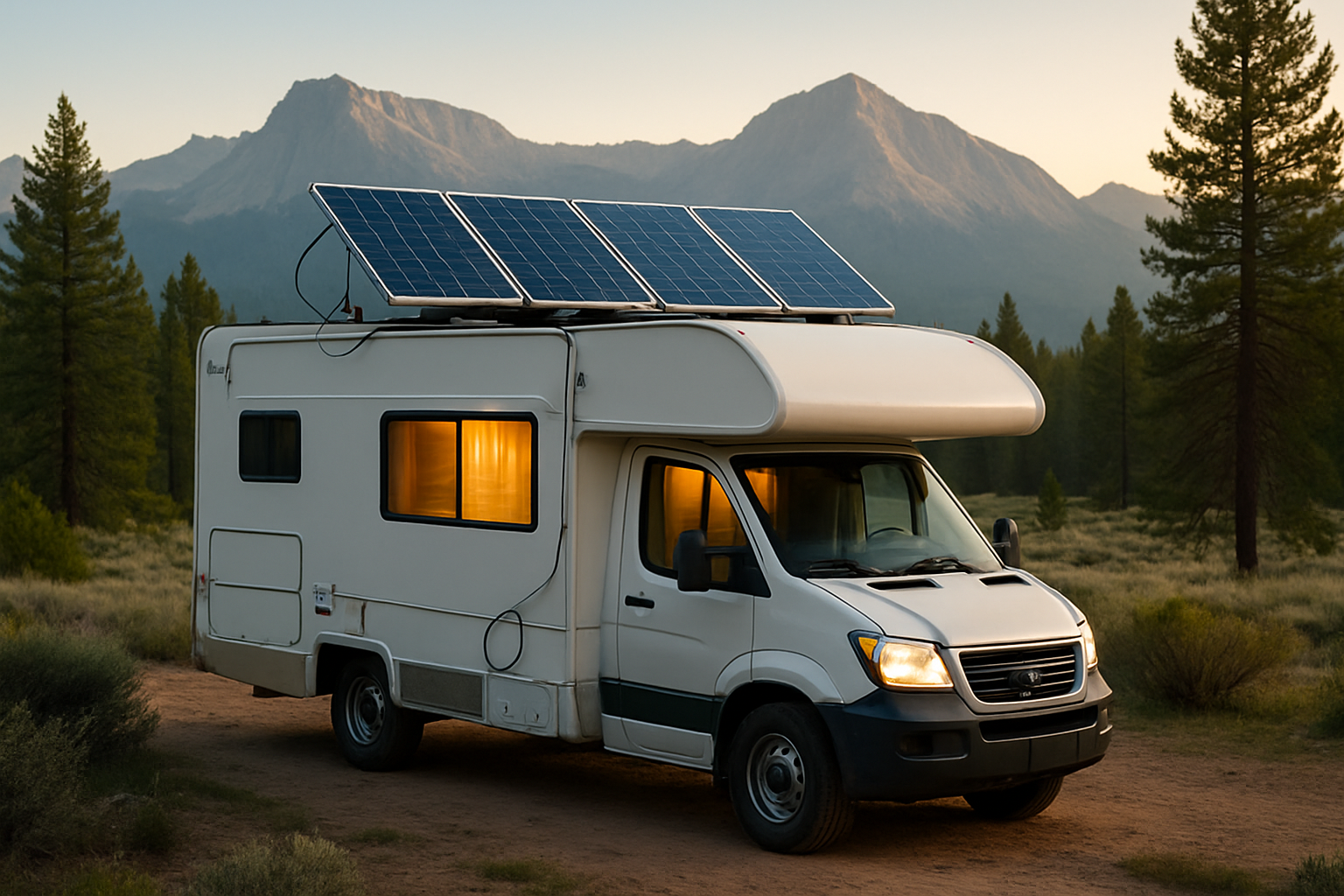Many RV enthusiasts dream of staying cool on hot summer days without relying on noisy generators or expensive shore power. The idea of running an air conditioner purely on solar power is appealing, offering true energy independence. Achieving this comfort requires careful planning and a robust understanding of your RV's energy needs and solar system capabilities.

Understanding Air Conditioner Power Demands
Air conditioners are among the most power-hungry appliances in an RV. Their energy consumption varies significantly based on the unit's size and type. Typically, RV air conditioners are rated in British Thermal Units (BTUs), with common sizes being 13,500 BTU and 15,000 BTU.
Types of RV Air Conditioners and Their Consumption
A standard 13,500 BTU RV rooftop air conditioner might draw around 1,500 to 2,000 watts while running continuously. The initial surge, or 'start-up' current, can be much higher, often three to five times the running wattage for a brief moment. This surge is a critical factor when sizing your inverter and battery bank. Smaller portable AC units generally consume less power, typically ranging from 500 to 1,000 watts.
Many RV owners install 'soft start' devices on their air conditioners. These devices significantly reduce the initial surge current, making it easier for smaller inverters and battery banks to handle the load. Reducing the surge can prevent system overloads and allow you to power your AC with a more modest solar setup.
Peak Load vs. Continuous Operation
Running an RV air conditioner on solar power means managing both peak load and continuous power draw. Peak load refers to the maximum power demand, usually during startup. Continuous operation is the steady power draw once the unit is running. Your solar system must be capable of handling both. For example, a 15,000 BTU AC unit might require 3,000-5,000 watts for a few seconds at startup, then settle into a continuous draw of 1,800-2,500 watts. Factoring in these demands is crucial for a reliable system.
Designing Your RV Solar System for AC
Powering an air conditioner with solar requires a well-designed system that integrates solar panels, a robust battery bank, and an efficient inverter.
Solar Panel Capacity: How Much is Enough?
Solar panels convert sunlight into electricity. The amount of power they generate depends on their wattage, efficiency, and the amount of direct sunlight they receive. Solar technology is uniquely modular, allowing deployment at various scales, including small rooftop installations.
To run an RV air conditioner, you will need a substantial solar array. A typical 13,500 BTU AC unit running for several hours a day could require 800 to 1,200 watts of solar panels, or even more, to replenish the battery bank adequately. This estimate accounts for real-world conditions, where panels rarely produce their full rated power due to factors like temperature, angle, and partial shading. For instance, a 1,000-watt solar array might only produce 400-600 watt-hours per hour on average during peak sun hours.
Consider the average daily solar insolation for your travel areas. Regions with more intense and longer sun exposure will yield more power from the same panel array. The Levelized Cost of Electricity (LCOE) for utility-scale solar PV has seen fluctuations, with calculations assuming increases in the cost of capital in various regions between Q1 2021 and Q4 2022.
Battery Storage: The Heart of Your Off-Grid AC
Batteries store the energy generated by your solar panels, providing power when the sun isn't shining or when demand exceeds immediate solar production. For high-draw appliances like air conditioners, lithium iron phosphate (LiFePO4) batteries are the preferred choice. They offer high energy density, a long cycle life, and consistent power output, even under heavy loads. The cumulative electricity storage deployment has seen significant growth, indicating the increasing reliance on such systems.
To calculate your battery needs, estimate how many hours you plan to run your AC. If a 1,500-watt AC runs for 4 hours, it consumes 6,000 watt-hours (Wh). With a 12-volt system, this translates to 500 amp-hours (Ah) (6000 Wh / 12V = 500 Ah). You would need a battery bank significantly larger than this to avoid deep discharge and ensure longevity, perhaps 600-800 Ah of LiFePO4 capacity for comfortable operation.
| AC Unit Size (BTU) | Running Watts (Approx.) | Surge Watts (Approx.) | Estimated Daily Wh (4 hours) | Recommended LiFePO4 Ah (12V) |
|---|---|---|---|---|
| 9,000 | 1,000 | 2,500 | 4,000 | 350-450 |
| 13,500 | 1,500-2,000 | 3,000-5,000 | 6,000-8,000 | 500-700 |
| 15,000 | 1,800-2,500 | 4,000-6,000 | 7,200-10,000 | 600-850 |
Note: These are estimates. Actual requirements vary based on efficiency, insulation, and ambient temperature.
Inverter Selection: DC to AC Conversion for High Loads
An inverter converts the direct current (DC) stored in your batteries into alternating current (AC) that your air conditioner uses. For RV air conditioners and other sensitive electronics, a pure sine wave inverter is essential. Modified sine wave inverters can damage appliances and run them inefficiently, leading to higher power consumption and potential equipment failure. Ensure your inverter's continuous wattage rating exceeds your AC's running wattage, and its surge rating can handle the AC's startup current.
Optimizing Performance in Summer Conditions
Beyond system sizing, several strategies can help you maximize your solar system's ability to run your RV AC, especially during hot summer months.
Mitigating Heat and Maximizing Solar Harvest
- Panel Angle and Orientation: Adjusting your solar panels to face the sun directly can significantly increase their output. In summer, the sun is higher in the sky, so a flatter angle might be more effective than in winter.
- Shade Avoidance: Even partial shading on one panel can drastically reduce the output of your entire solar array. Park in open, sunny areas whenever possible.
- RV Insulation: Improve your RV's insulation to reduce the amount of heat entering the living space. This includes reflective window covers, roof vents, and proper sealing of doors and windows. A well-insulated RV requires less energy to cool.
Energy Management Strategies for AC Use
- Pre-cooling: Cool your RV in the late afternoon or early evening when solar production is still high, before temperatures peak. This reduces the load on your system during the hottest parts of the day or overnight.
- Thermostat Settings: Set your AC thermostat to a reasonable temperature, rather than excessively low. Each degree lower significantly increases power consumption.
- Ventilation: Use fans and open windows during cooler parts of the day to circulate air and reduce the need for constant AC operation.
Real-World Expectations and Practical Advice
While running an RV air conditioner on solar is achievable, it comes with realistic expectations and potential limitations.
Realistic Run Times and System Limitations
Even with a substantial solar setup, running an RV AC continuously for 24 hours solely on solar power in summer is challenging. Most systems are designed to provide several hours of AC use, typically during the hottest parts of the day or for a comfortable night's sleep. Factors like cloud cover, extreme heat, and high humidity will impact performance. It is important to monitor your battery state of charge and solar input to manage expectations.
Beyond Solar: Hybrid Solutions for Extended Comfort
For extended AC use or during periods of low solar production, a hybrid approach often provides the best comfort. This could involve:
- Shore Power: Connecting to campground electricity when available.
- Generators: Using a portable generator to supplement power, especially for charging batteries or running the AC directly during peak demand.
- DC Air Conditioners: Some newer RVs feature 12V or 48V DC air conditioners, which can be more efficient as they eliminate inverter losses. These units are designed to run directly from your battery bank.
Ultimately, achieving cool comfort on the road with solar power is a balance between system capacity, energy management, and realistic expectations. With careful planning and the right components, you can significantly enhance your off-grid experience.
Achieving Cool Comfort on the Road
Powering your RV air conditioner with solar energy is a tangible goal for many travelers seeking independence and comfort. It demands a well-thought-out system, including sufficient solar panel wattage, a high-capacity LiFePO4 battery bank, and a pure sine wave inverter. By understanding the power demands of your AC, optimizing your system for summer conditions, and employing smart energy management strategies, you can enjoy cool air even when off the grid. The journey to energy independence is rewarding, offering quiet, reliable power for your adventures.
Frequently Asked Questions
How many solar panels do I need to run an RV AC?
To run a typical 13,500 BTU RV air conditioner for several hours, you will generally need a solar array of 800 to 1,200 watts or more. This accounts for real-world efficiency losses and ensures adequate battery replenishment. The exact wattage depends on your AC's consumption, daily sun hours, and desired run time.
What size battery bank is ideal for RV AC?
For running an RV AC, a LiFePO4 battery bank of 500 to 850 amp-hours (Ah) at 12 volts is often recommended. This capacity allows for several hours of AC operation while providing a buffer for other appliances and preventing excessive battery discharge. Calculate your specific needs based on your AC's wattage and how long you plan to run it.
Can a portable solar generator run an RV AC?
Some high-capacity portable solar generators with large inverters (typically 2,000+ watts continuous) can run smaller RV air conditioners or a standard RV AC with a soft start device. However, their battery capacity might only provide a limited run time, often 1-3 hours, before needing a recharge. For extended use, a dedicated, larger RV solar system is more practical.
How can I reduce my RV AC's power consumption?
You can reduce your RV AC's power consumption by improving insulation, using reflective window covers, pre-cooling your RV during peak solar hours, and setting the thermostat to a moderate temperature. Utilizing fans for air circulation and parking in shaded areas can also significantly lessen the AC's workload.





Leave a comment
All comments are moderated before being published.
This site is protected by hCaptcha and the hCaptcha Privacy Policy and Terms of Service apply.